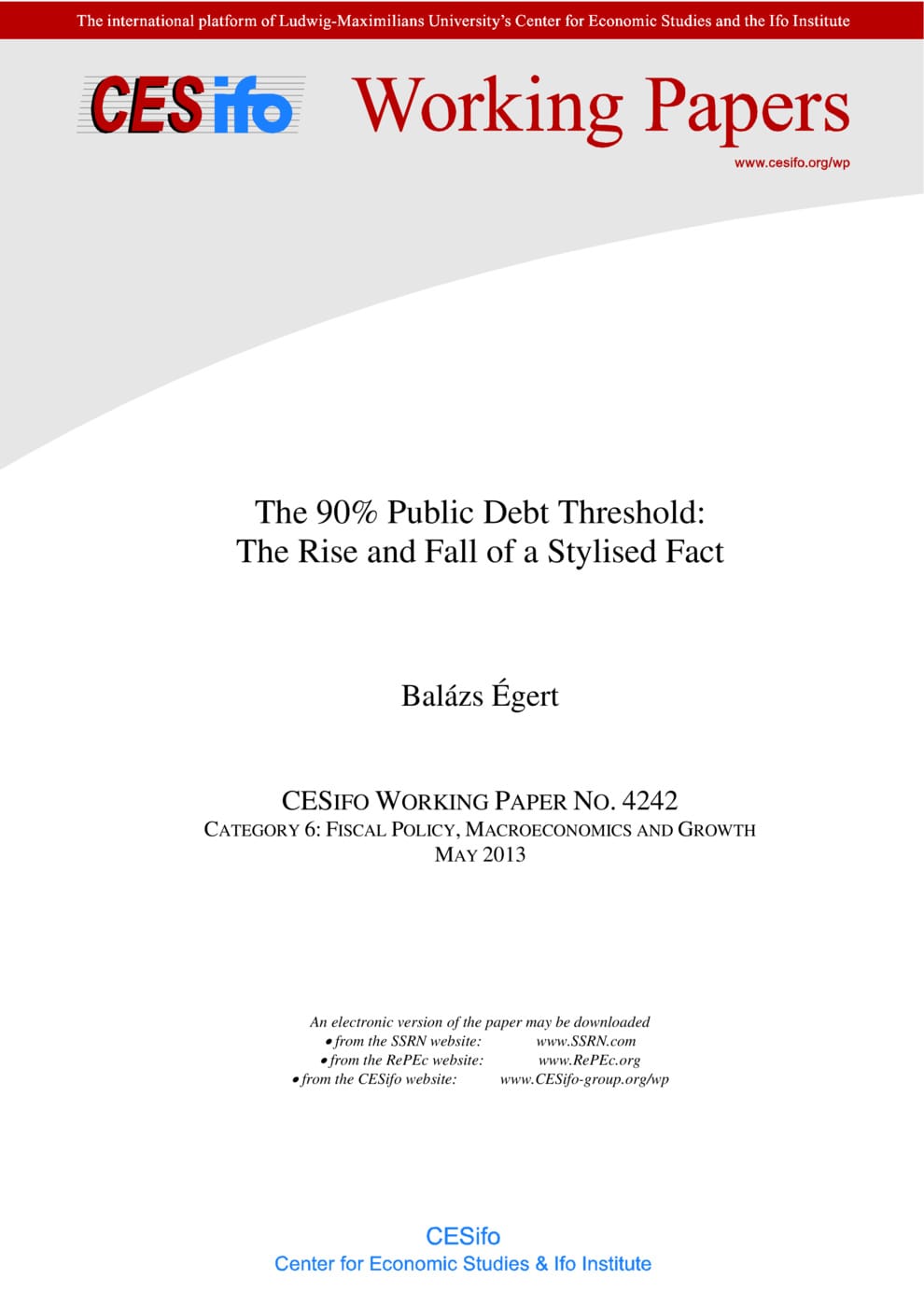The 90% Public Debt Threshold: The Rise and Fall of a Stylised Fact
CESifo, Munich, 2013
CESifo Working Paper No. 4242

This paper puts the original Reinhart-Rogoff dataset, made public by Herndon et al. (2013), to a formal econometric test to pin down debt threshold endogenously. We show that the nonlinear relation from debt to growth is not very robust. Taken with a pinch of salt, our results suggest, however, that there may be a tipping point at around 20% of GDP, beyond which central government debt has a negative influence on growth. Further (and greater) thresholds may exist but their magnitude is highly uncertain. For general government debt (1960-2009), the threshold beyond which negative growth effects kick in is considerably higher at about 50%. Finally, individual country estimates reveal a large amount of cross-country heterogeneity. For some countries including the United States, a nonlinear negative link can be detected at about 30% of GDP. For others, the thresholds are surrounded by a great amount of uncertainty or no nonlinearities can be established. This instability may be a result of threshold effects changing over time within countries and depending on economic conditions, not captured in our estimations. Overall, our results can be seen as a formal econometric confirmation that the 90% public debt threshold is not in the Reinhart-Rogoff data. But our results also seem to suggest that public debt might have a negative effect on economic performance kicking in at already fairly moderate public debt levels. Furthermore, the absence of threshold effects or low estimated thresholds may not preclude the emergence of further threshold effects, especially as public debt levels are rising to unprecedentedly high levels.
Fiscal Policy, Macroeconomics and Growth
Public Finance